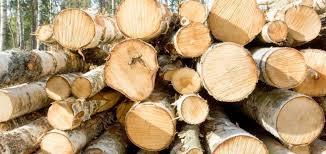Wood-based biochemicals look to be a sustainable, cost-efficient alternative for the future
June 21, 2016

An international team of researchers has announced that it has successfully demonstrated an alternative economically viable manufacturing method for a major basic chemical product, succinic acid. Succinic acid is a so-called platform chemical: a starting point to create a huge range of chemical compounds.
 Today, most of the succinic acid used in the chemical industry is derived from petroleum. The present research, conducted by a team led by Konrad Hungerbühler, Professor of Safety and Environmental Protection Technology in Chemistry at ETH Zurich, in close collaboration with scientists from EPFL and the Chalmers University of Technology in Gothenburg, shows that processes using wood or cellulose waste from the forestry and paper industries as a source material can be at least as cost-effective, environmentally friendly and safe as current oil-based processes.
Today, most of the succinic acid used in the chemical industry is derived from petroleum. The present research, conducted by a team led by Konrad Hungerbühler, Professor of Safety and Environmental Protection Technology in Chemistry at ETH Zurich, in close collaboration with scientists from EPFL and the Chalmers University of Technology in Gothenburg, shows that processes using wood or cellulose waste from the forestry and paper industries as a source material can be at least as cost-effective, environmentally friendly and safe as current oil-based processes.
The scientists used simulation procedures to compare different manufacturing processes and bacteria, which were optimized in the laboratories at EPFL for the production of succinic acid via a biotechnological route. Their findings showed that, depending on the choice of bacteria and processes used, biotechnological manufacture using wood waste is either significantly cheaper or considerably eco-friendlier than conventional methods based on oil. The researchers took into account the total energy required for manufacture, including grey energy (which also covers the indirect energy required to manufacture primary products, infrastructure and waste management), as a measure of the environmental impact.
The scientists calculated that for a specific biotechnological manufacturing method, succinic acid can be manufactured 20% more cheaply with a comparable environmental impact. Using a second method with different bacteria, the environmental impact can be reduced by 28% – with comparable costs to traditional oil-based methods.
To take advantage of the fermentative capabilities of bacterial microorganisms to produce succinic acid, a carbon source, such as glucose is needed. Glucose can be extracted from sugar beet or sugar cane; but wood is also an option. “Cellulose, found in wood, can be converted to glucose by adding acid,” explained Merten Morales, PhD student in Hungerbühler’s group and lead author of the study.
The scientists compared the method of manufacture of succinic acid from sugar beet with the process for manufacture from wood waste. In terms of cost effectiveness, environmental impact and safety, the differences were negligible. “If it is possible to use wood waste – in other words, waste from the forestry industry – that is what we should do,” said Morales. “Then there is no competition with the food supply chain.”
This new method could also be of interest to the paper industry: an alkaline solution containing cellulose is also formed as waste in this sector, but it is not currently recycled. It would be an ideal source of glucose. “The European paper industry could once again hope to compete with strong competition overseas if it succeeded in recycling waste products and selling them with added value,” Morales pointed out.
However, construction of a biotechnological production plant is a long-term investment. Before a company proceeded along this route, it would need to know whether it would be worthwhile. Thanks to this research, that much is now clear: it certainly is.
The study formed part of the Swiss National Research Program "Resource Wood".
About the Author(s)
You May Also Like


